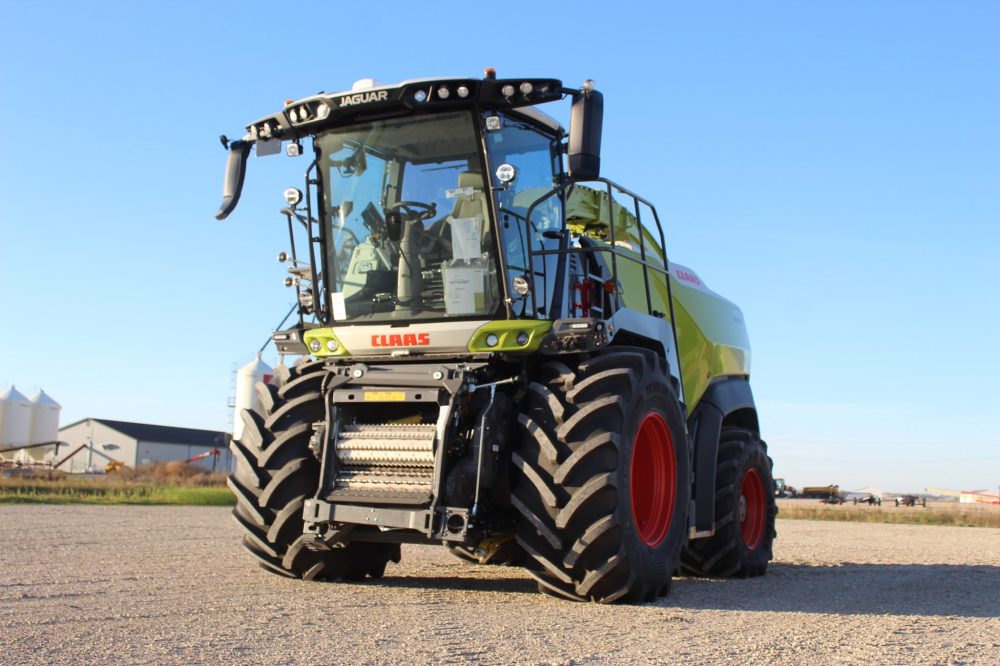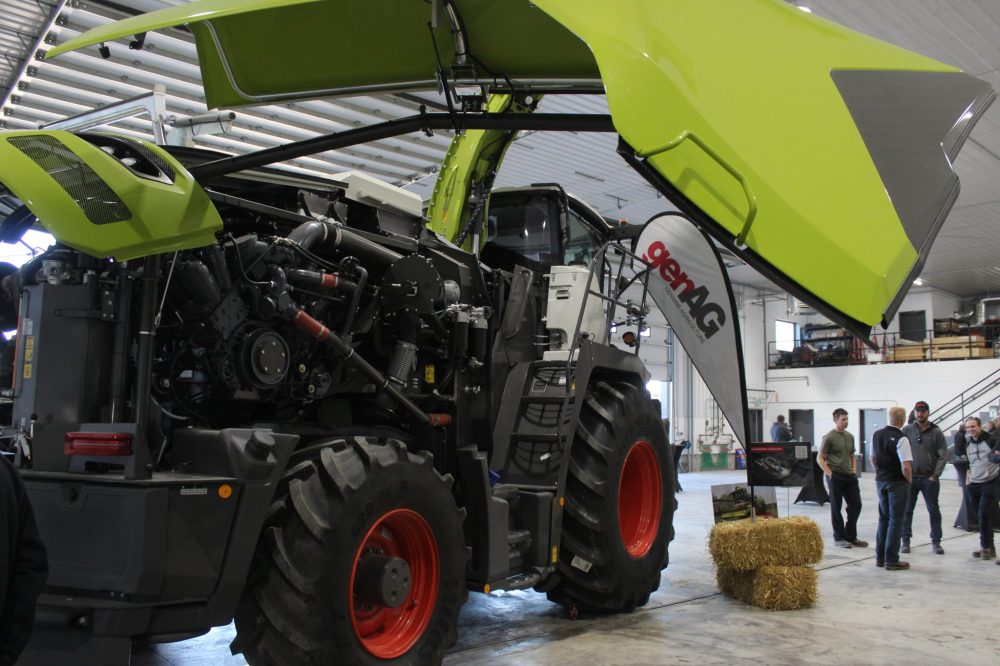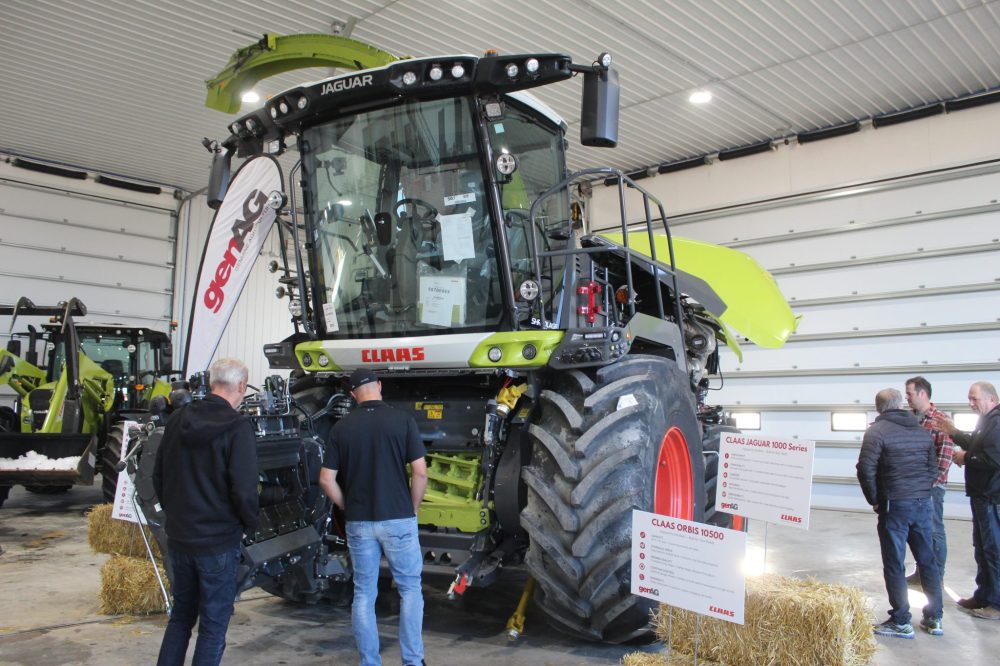World-class forage harvester makes stop in Steinbach
Advertisement
A new, state-of-the-art forage harvester made a stop in Steinbach, the first time the model has been introduced in Manitoba.
The Claas Jaguar 1200 debuted at equipment dealer genAG on Oct. 8 for local farmers to get a first look.
The newest iteration of the German-made forage harvester promises developments that improve both its capacity and fuel efficiency, said genAG sales representative David Grienke.

“They’ve achieved this marrying of cutting edge technology but still simplified design,” he told The Carillon.
The model boasts 1,120 horsepower, an improvement on the previous Claas900 series of forage harvesters, Grienke said. It’s advertised to have 20 percent more throughput while using 20 percent less fuel. That means more crops, such as corn, can be chopped for silage faster, effectively doing the same job as two smaller choppers, he said.
Grienke said having that increased capacity can be a crucial improvement for farmers who need to get their corn off the fields quickly as later harvest seasons bring more rain.
“There’s lots of guys out there where they needed just one day more, two days more, before the rain came. And having this kind of throughput allows you to do that,” he said.
The 1200 model fits a 14-row header, a boost compared to the previous version’s 12-row header, allowing for “massive” swaths getting picked up together, Grienke said.

“The Claas Jaguar is the leading chopper in North America. And now with this one, they’ve made this huge jump up in productivity and power,” he said.
Stepping into the cab, the usual expected rumbling from the engine is replaced with a low hum due to the sound-proofed cab. Operators can take their pick between the standard wheel or the new joystick for steering, a first for Claas.
Jonathan Vaags, farmer near Dugald, has a feed lot that can hold 3,000 cows. He came to check out the new equipment and was curious about differences with the newest model of forage harvester. While it was interesting to see, the more than $1 million price was more than he could manage for getting the piece of equipment, Vaags said.
“In 10 years, I’ll be able to afford one,” he said, with a chuckle.
Improvements could help boost his harvesting efficiency, but it would be expensive operating hours, Vaags said.

He said it was a “weird” harvest this year because of the stretches of rain. Vaags had 720 acres for forage this year.
“It just felt like we never really got any momentum going. We would get two good days in, and then we would have a quarter inch of rain that would keep us out of the field for three days. And then we’re finally get going again,” he said. “But I’m not complaining about too much rain.”
